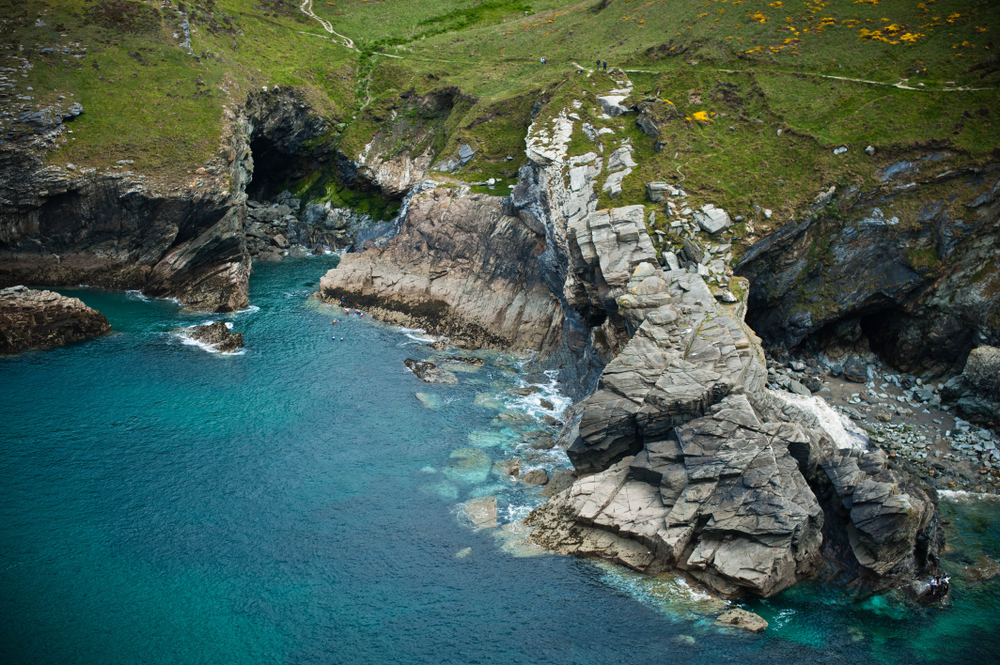Tintagel has become synonymous with the legends of King Arthur but beyond the famous clifftop castle, the much-photographed statue of the mythical man himself, merlin’s cave and the themed gift-shops there is another building in the village that truly celebrates this era of knights, the Round Table and medieval chivalry.
The grand but rather austere grey, granite façade of King Arthur’s Great Halls belies the ornate beauty of the interior, built in 1933 it is the result of one man’s passion for Arthurian myths. The building was the brainchild of Frederick Thomas Glassock, a businessman from London, who moved to Cornwall in the late 1920s. Glassock was the founder of Monk & Glass, a successful custard powder and jelly manufacturer which was eventually bought by Bird’s Custard, and he visited Tintagel on holiday and fell in love with the beauty of the region and its links to the legendary king.
Glassock decided to purchase a home in the village and to use his fortune to create his very own version of Camelot here in Cornwall. The fantasy palace that he constructed can still be seen today and the Great Halls is now a Listed Building as testament to its wonderful craftsmanship and Glassock’s unusual vision.
The Great Hall
The main focal point of the building is the enormous ‘Great Hall’ which is lit by stained glass windows and dressed like the hall of a medieval castle, complete with heraldic flags, suits of armour, a Round Table and throne. All this might sound a little kitsch but the quality of the artwork makes up for the cliché.
The seventy-two striking stained glass windows made by the Arts and Crafts artist Veronica Whall depict scenes from Arthurian legends and represent the largest collection of her work to be found anywhere in the country. The building itself was constructed by local craftsman using 53 different kinds of Cornish stone. The whole effect is magical and as a result the hall has featured as a set for numerous films and TV series since its completion as well as welcoming more than 2 million visitors since it opened its doors as an attraction.
The order of the Fellowship of the Knights of the Round Table
Sadly Glassock didn’t have long to enjoy his creation as he passed away in 1934 just one year after it was finished. However, in 1927, a few years before his death, he had founded the Order of the Fellowship of the Knights of the Round Table, a group intended to promote Christian ideals and the notions of chivalry for which King Arthur’s knights had been renowned. The Great Halls continued to be the meeting place for the Fellowship for several years before then being used as a Masonic Hall.
Today King Arthur’s Great Halls has become a popular venue for weddings and events but this unique building is still open to for the public to enjoy from March to September, Tuesday to Sunday, 10 – 5pm and is well worth seeking out.
